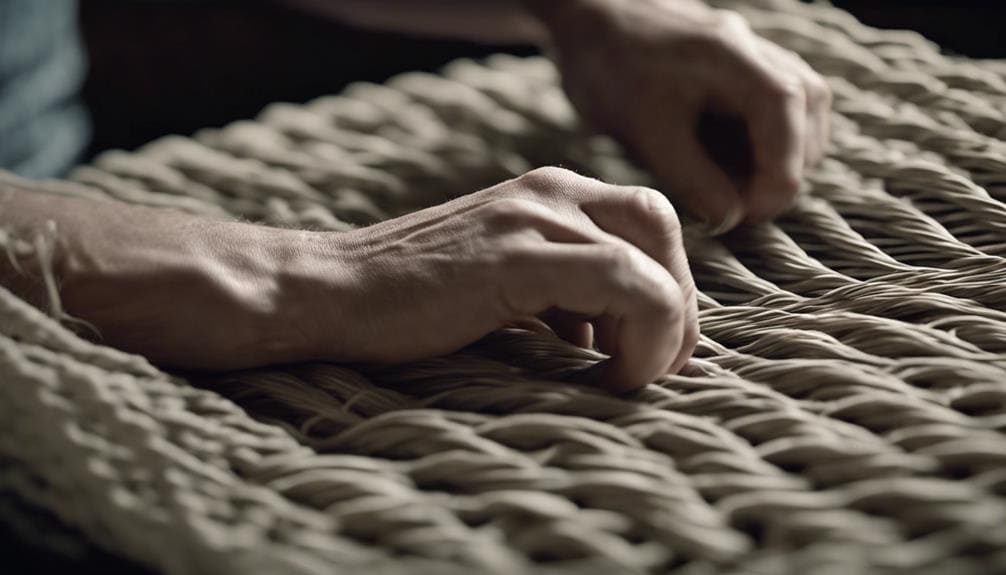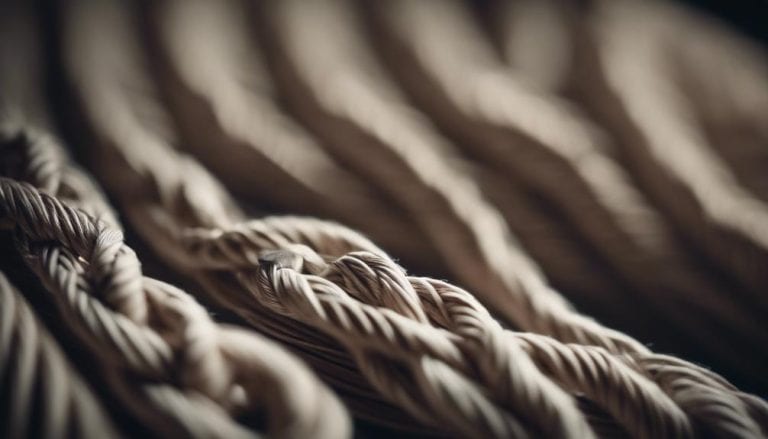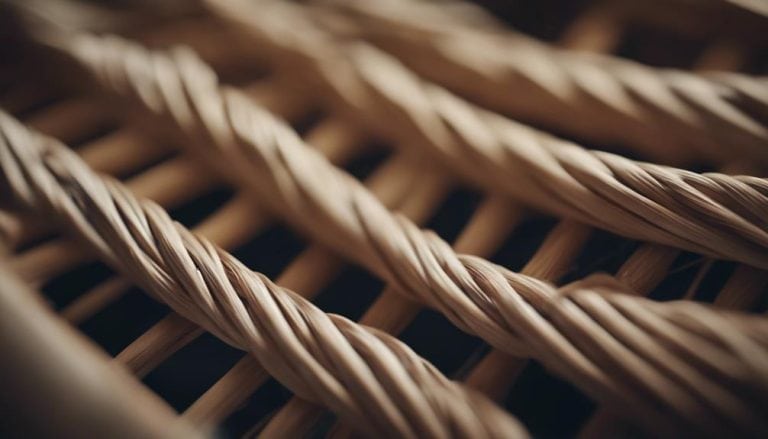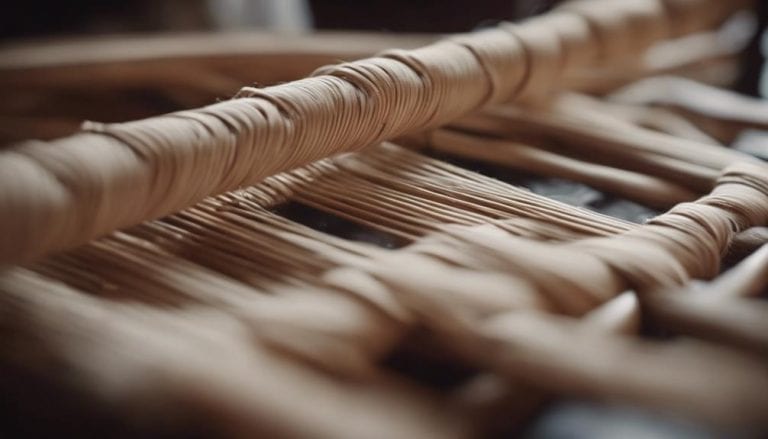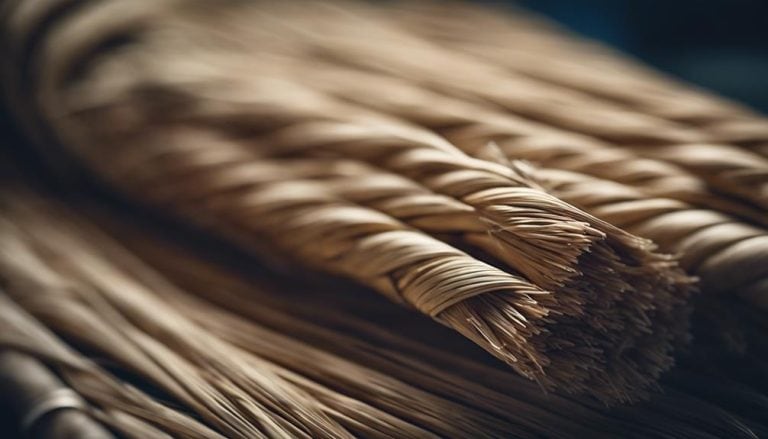Mastering Techniques in Danish Cord Weaving
In my recent Danish cord weaving project, I encountered a challenge maintaining tension while weaving intricate patterns. By honing my skills in Danish cord weaving techniques, I overcame this hurdle and achieved a more polished final product.
Understanding the nuances of weaving patterns and perfecting techniques can elevate the quality of your craftsmanship. Stay tuned to discover how mastering these techniques can unlock creative possibilities and elevate your woodworking projects.
Mastering techniques in Danish cord weaving involve intricate patterns and precise tension control, essential for creating durable and visually appealing woven designs. Practice and patience are key to honing your skills in this traditional craft, leading to beautiful handcrafted pieces with a unique Scandinavian touch.
Key Takeaways
- Danish cord weaving demands attention to detail and historical significance for mastery.
- Advanced patterns require intricate designs, an understanding of warp and weft, and meticulous craftsmanship.
- Refining techniques with Double Weave, Twining Methods, and color combinations enhance detail.
- Integrating modern elements like clean lines, bold colors, and innovative patterns updates traditional weaving.
Understanding Danish Cord Weaving Basics
Delving into Danish cord weaving unveils meticulous artistry that intertwines tradition and innovation in furniture craftsmanship. The material properties of the Danish cord, which is tightly rolled brown paper resembling rush or raffia, provide durability and contribute to sustainability, reflecting its historical significance in mid-century Danish design.
This weaving technique has had a profound cultural impact, with renowned designers like Hans Wegner and Finn Juhl incorporating Danish cord into their iconic furniture pieces, elevating it to a symbol of Danish design excellence. To embark on the journey of Danish cord weaving, one must first understand the weaving tools required and the intricate process of mastering the warp and weft.
Weaving tools such as a fid, a mallet, and a caning needle are essential for creating the envelope weave pattern or the Moller weave pattern common in Danish cord chair weaving. With attention to detail and a deep appreciation for the craft, one can truly grasp the essence of Danish cord weaving and its blend of tradition and innovation.
Exploring Advanced Weaving Patterns
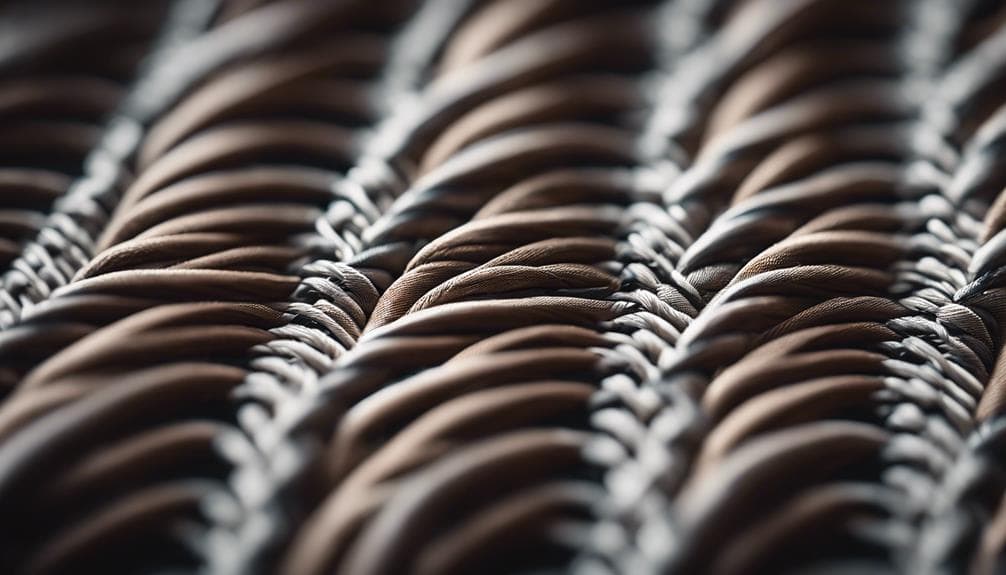
Embarking on exploring advanced weaving patterns in Danish cord unveils a realm of intricate designs that intricately blend tradition with innovation, elevating the craftsmanship of furniture pieces to new heights. We delve into complex weft variations and intricate warp combinations in these advanced patterns.
The envelope weave and Moller weave are just the tip of the iceberg regarding the possibilities that await. These patterns demand a keen understanding of the interplay between warp and weft, requiring meticulous attention to detail and a steady hand.
Enhancing Weaving Techniques for Detail
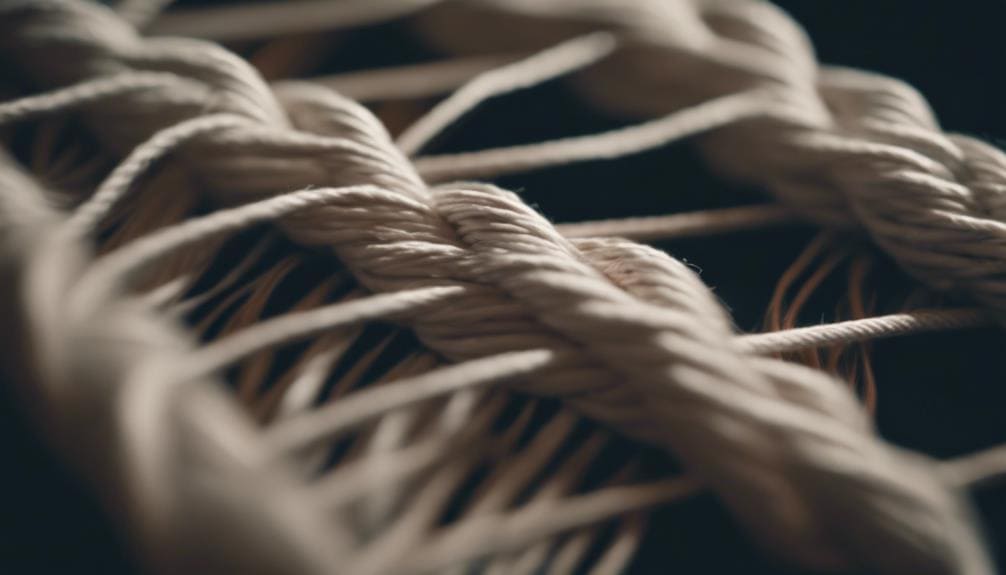
To achieve exquisite intricacy in Danish cord weaving, mastering advanced techniques that enhance the interplay between warp and weft is imperative. In my experience, focusing on precision craftsmanship and intricate designs allows for the creation of truly remarkable pieces.
Here are some techniques I have found particularly effective:
- Incorporating Double Weave: Detailed patterns emerge by deftly weaving the cord under and over multiple strands simultaneously, adding depth and complexity to the design.
- Utilizing Twining Methods: Implementing twining techniques not only strengthens the structure of the weave but also enables the creation of fine details and unique textures.
- Experimenting with Color Combinations: Mixing different shades of Danish cord strategically can produce stunning visual effects, enhancing the overall aesthetic appeal of the woven piece.
- Mastering Tension Control: Maintaining consistent tension throughout the weaving process is vital for achieving expert weaving results and ensuring the intricacy of the final product.
Incorporating Modern Design Elements
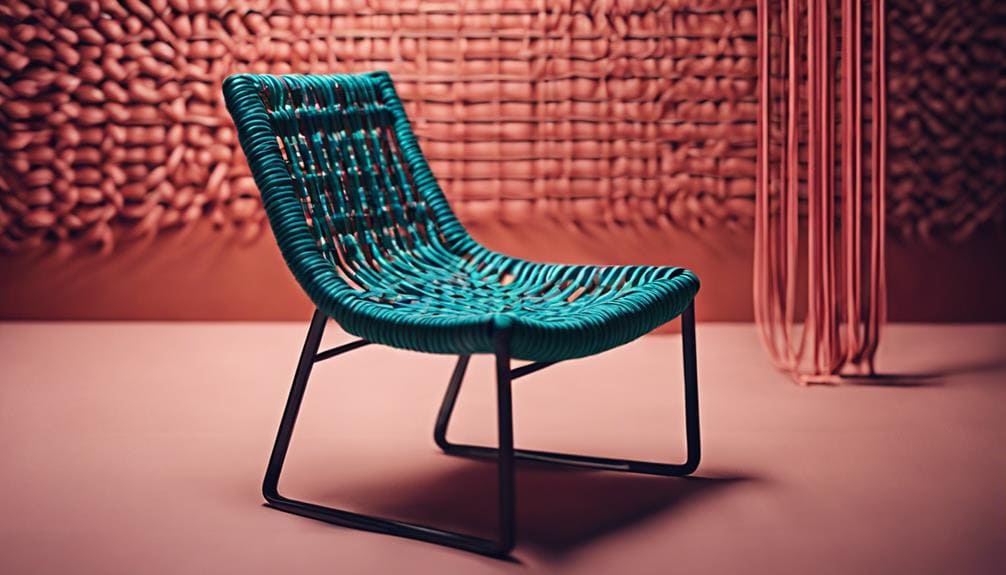
Integrating modern design elements into Danish cord weaving involves a seamless blend of clean lines, minimalistic forms, and contemporary aesthetics. One can experiment with innovative patterns, bold colors, and unconventional weaving techniques to create a contemporary fusion in Danish cord weaving.
Incorporating geometric shapes and asymmetrical designs can push the boundaries of traditional weaving into a modern realm. Additionally, combining Danish cord weaving with materials like metal or glass can further enhance the fusion of modern and traditional elements.
| Modern Design Elements | Description | Example |
|---|---|---|
| Geometric Patterns | Incorporating angular shapes and lines | Weaving a chair seat with a chevron pattern |
| Bold Colors | Using vibrant hues for a modern pop | Adding a bright orange border to a stool |
| Innovative Weaving Techniques | Experimenting with new ways of weaving | Creating a 3D effect with overlapping cords |
Troubleshooting Common Weaving Challenges
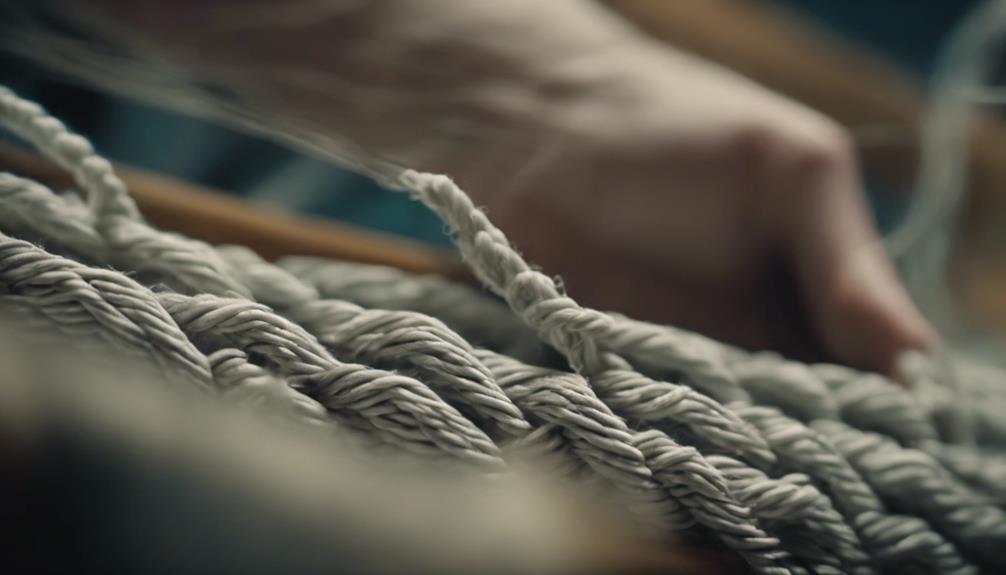
In troubleshooting common weaving challenges encountered in Danish cord weaving, mastering techniques to address uneven tension, gaps in weaving, and unraveling knots is crucial for achieving a high-quality result. I focus on adjusting tension by pulling cords evenly and securing knots tightly to overcome these hurdles.
Additionally, ensuring consistency in spacing and tightening cords appropriately helps eliminate gaps in the weave. To prevent knots from unraveling, I double-check their security and reinforce it with an additional cord if needed. These meticulous steps are essential in creating a well-woven and durable Danish cord seat. Remember, attention to detail and precision are key to mastering the art of Danish cord weaving.
Frequently Asked Questions
What Is the Nail Spacing for Danish Cord Weaving?
I space nails for Danish cord weaving approximately 7⁄8 to 1 inch apart on seat rails. This spacing ensures optimal tension for weaving patterns. Correct nail placement is crucial for stability and appearance, producing professional results.
Which Is Better Laced or Unlaced Danish Cord?
I prefer a laced Danish cord for its added strength and stability. The weaving tension is more uniform, creating a secure structure. However, unlaced cord offers design flexibility and intricate patterns. The choice between laced or unlaced depends on aesthetic and structural needs.
How Do You Weave a Danish Cord?
Weaving Danish cord is like painting a detailed portrait with threads. Start with basic techniques, wrapping front to back, then move to advanced patterns like foundation weaving. It’s an intimate dance of precision and creativity.
How Much Danish Cord Do I Need?
I typically estimate the Danish cord needed by measuring the length required around the chair frame. Having an extra cord on hand is wise in case of mistakes. For a standard seat, plan for around 300-400 feet.
Conclusion
After countless hours perfecting Danish cord weaving techniques, I’ve realized that the key to mastering this art lies in embracing the unexpected challenges that arise. From unraveling cords to tangled weaves, each obstacle presents an opportunity to refine my skills and create truly unique pieces. So, next time you find yourself in a weaving dilemma, remember to embrace the irony and enjoy the journey of mastering Danish cord weaving.

